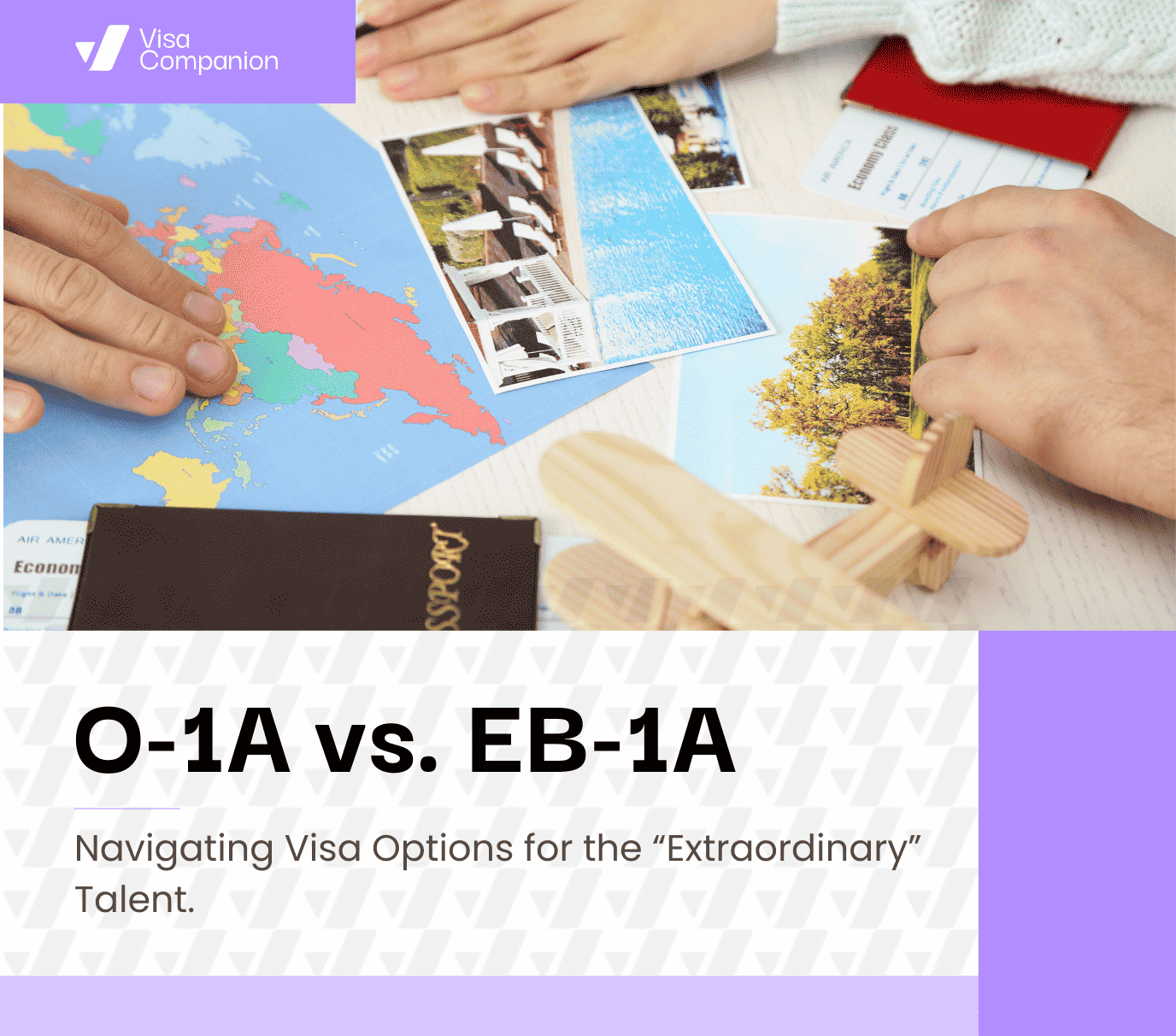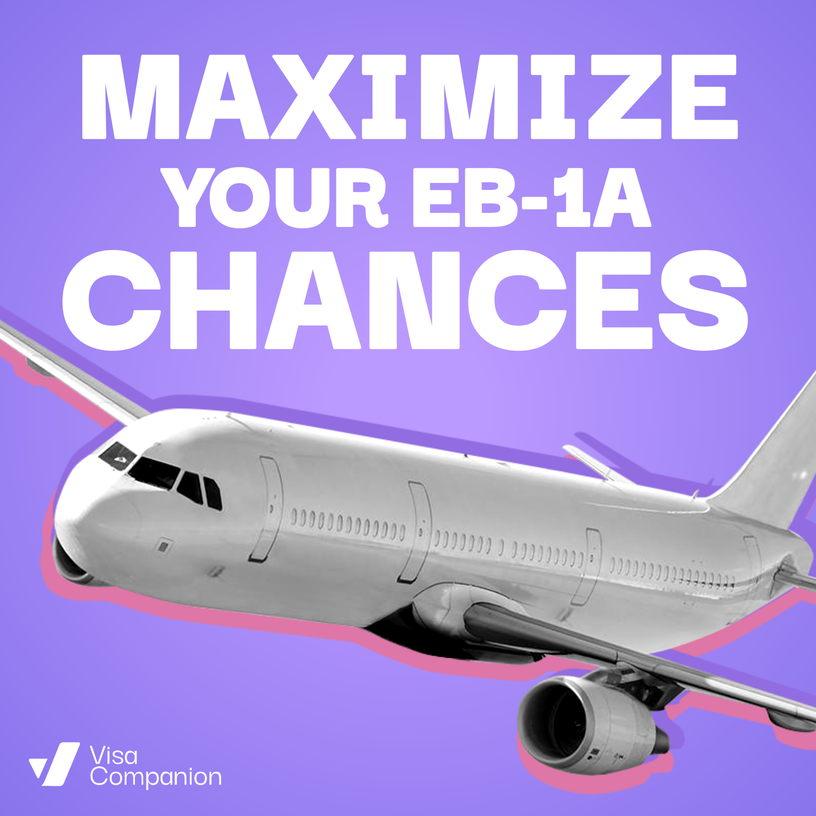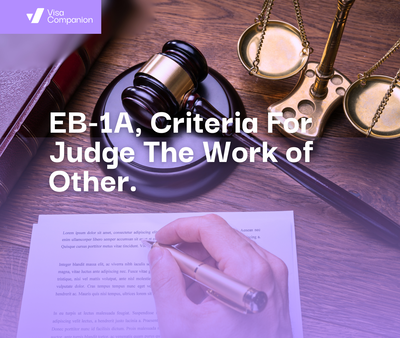O-1A vs. EB-1A: Navigating Visa Options for the "Extraordinary" Talent

O-1A vs. EB-1A: Navigating Visa Options for the "Extraordinary" Talent
Are you a foreign national with exceptional abilities in your field? The United States offers special visa options to attract and retain brilliant minds like yours. However, with categories like O-1A and EB-1A, knowing which path is right for you can be confusing. These two are popular choices for immigrants seeking to make a name for themselves in various fields, from the arts to business. Since these visas are very similar, it can be confusing to determine which one is best for you.
Fear not! This article will explain these visas' features and key differences, helping you chart your course to American opportunity.
What is the O-1A Visa?
The O-1A visa, sometimes referred to as the "genius visa," is often misunderstood. While it attracts high-profile individuals like athletes and Nobel laureates, it's not limited to them. Many with exceptional abilities in science, technology, business, and even the arts can qualify. This includes startup founders, researchers, and artists. The key to securing an O-1A visa lies in demonstrating a sustained record of extraordinary achievements and recognition. This can be evidenced through awards, critical acclaim, a significant portfolio of work, or even commanding a high salary compared to peers. Letters of recommendation from established figures in your field further bolster your application by solidifying your reputation.
What is the EB-1A Visa?
The EB-1A visa is part of the Employment-Based (EB) category of visas. It's specifically aimed at individuals with extraordinary abilities in their field, including outstanding professors, researchers, managers, executives, and more. The EB-1A has ten criteria, of which eight are the same as the O-1A. However, the standard for the EB-1A is significantly higher as it is a path to permanent residency.
While both O-1A and EB-1A visas cater to individuals with extraordinary ability in their field, the EB-1A, as a path to permanent residency, demands significantly more documentation and processing time compared to the temporary employment visa O-1A. For an alien to successfully apply for an O-1A or EB-1A visa, they must be highly esteemed within their field in addition to satisfying specific criteria including, but not limited to:
- Membership in associations that require outstanding achievement.
- Awards
- Published material in professional or major trade publications, newspapers, or other major media.
- Citations to their work
- Presentations at prestigious conferences
- Peer Reviewer of important journals
- Original scientific, scholarly, or business-related contributions of major significance.
- Authorship of scholarly articles in professional journals.
- Commercial success.
Let's Get Visual: O-1A vs. EB-1A
Imagine a two-lane highway. The O-1A visa is the fast track, allowing temporary stays for individuals with proven extraordinary ability in the sciences, Arts, Education, Business, or Athletics.
Think race car - it's quick and efficient, but you'll eventually need to pit stop and renew your visa.
The EB-1A visa, on the other hand, is the on-ramp to permanent residency. It's designed for those who've reached the pinnacle of their fields and can significantly benefit the US. Picture a powerful touring vehicle - a long-term commitment that paves the way for an American life.
Are you an individual with exceptional talent in the fields of arts, sciences, business, education, or athletics? The United States offers visa options to attract and retain these high-caliber individuals: the O-1A and EB-1A visas. But what's the difference between them?
Imagine a Stepping Stone:
- O-1A Visa: Think of this as a temporary stepping stone. It allows individuals of extraordinary ability to live and work in the U.S. for up to three years, with the possibility of extension. Companies can sponsor this visa for exceptional employees.
- EB-1A Visa: This visa is the ultimate destination, offering a permanent residence (Green Card) path for individuals with extraordinary ability. Unlike the O-1A, you don't need an employer sponsor; you can petition for yourself!
Here's a table to summarize the key differences:
| Features | O-1A Visa | EB-1A Visa |
|---|---|---|
| Purpose | Temporary work in the U.S. | Permanent Residence (Green Card) |
| Sponsorship / Job Offer | Required by employer or agent | Not required (self-petition possible) |
| Validity | Up to 3 years (extendable) | Permanent |
| Processing Time | Standard processing: 2 weeks to 3 months Premium Processing: 15 calendar days | Standard processing: 4 to 7 months Premium Processing: 15 calendar days |
Choosing the Right Path:
- Are you considering short-term work or need a quicker visa? The O-1A might be a good fit.
- Are you aiming for permanent residency and the freedom to work for any U.S. employer? The EB-1A is your goal.
Remember: Both visas require demonstrating your "extraordinary ability" through extensive documentation showcasing your achievements and recognition within your field.
Need Help Charting Your Course?
Consult Visacompanionai to determine the best visa option for your unique situation. With proper guidance, you can use your extraordinary talents to shine in the U.S.!
Related Blogs

Navigating EB2-NIW and EB-1A Visa Timelines: Strategies for Efficient Processing
June 2, 2023Understanding the processing times for EB2-NIW (National Interest Waiver) and EB-1A (Extraordinary Ability) visas is crucial for applicants aspiring to obtain these U.S. employment-based preference visas.

EB1A: Are You a Leader in Your Field?
Sept 09, 2024Understanding whether you qualify for the EB-1A visa can be challenging, particularly when assessing if you have played a leading or critical role in a distinguished organization. This blog post aims to provide you with clear tools and insights to help evaluate and demonstrate your eligibility under this specific criterion, ensuring you present a compelling case to USCIS adjudicators.

Maximize Your EB-1A Chances: Evaluate Your Memberships
Sept 19, 2024The goal of this post is to help you assess whether you can argue that you meet the second of the ten EB-1A criteria: holding a membership in an association that demands outstanding achievement from its members.

EB-1A - Judging the Work of Others
Sept 29, 2024One important criterion for the EB-1A visa is demonstrating that you have been asked to judge the work of others, either individually or as part of a panel. This post provides insights and tips to help you determine whether you can effectively argue that you meet this fourth criterion of the ten EB-1A criteria.